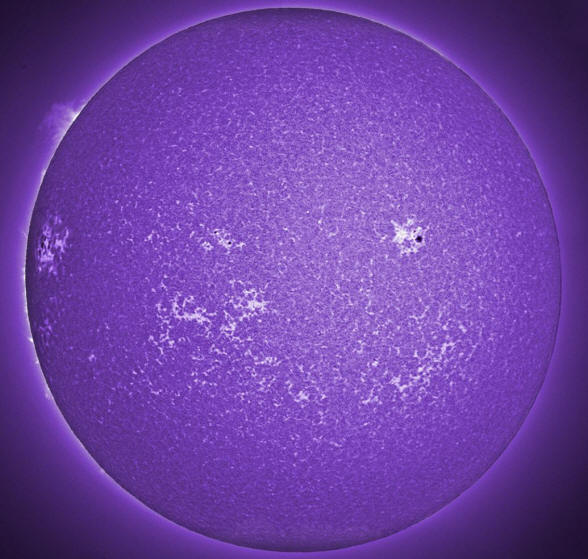Scientific
research into the Sun's composition
and behavior has lead to a new
branch of astrophysics.The
Sun has been the subject of intense
research by Electric Universe
advocates. Books such as
The Electric Sky by
retired Professor of Electrical
Engineering Don Scott,
The Electric Universe by
Dave Talbott and Wal Thornhill, and
many other independent articles and
peer-reviewed papers, have detailed
a growing accumulation of data in
support of the electrical connection
between the Sun and its family of
planets, especially Earth.
Over the last several years, NASA
and the European Space Agency (ESA),
along with the Japan Aerospace
Exploration Agency (JAXA), have
launched numerous scientific
instruments into Earth orbit, as
well as other more remote
destinations in hope of detecting
and analyzing the various ways the
Sun's energy influences our planet
The Advanced Composition Explorer
(ACE)
ACE is studying the charged
particles streaming from the Sun,
along with those arriving from deep
space and beyond. ACE is in orbit
around
LaGrange point L1, where
the Earth and Sun are in
gravitational equilibrium. L1
provides ACE with an unobstructed
view of the Sun's ionic wind, its
magnetic field, and those particles
emitted by the farthest galactic
regions. ACE should remain
operational until late in 2024.
Cluster II
Discovering the interaction between
the solar wind and the magnetosphere
is Cluster's primary goal. Four
identical spacecraft are flying a
tetrahedral formation in a highly
elliptical Earth orbit. Cluster is
currently collecting information
about how solar wind particles enter
the Earth's atmosphere through
magnetic funnels at each pole. The
four probes are also checking the
solar wind's interaction with our
magnetosphere, and the behavior of
plasma in the magnetotail during
auroral substorms.
Fast Auroral SnapshoT Satellite
(FAST)
FAST is performing a number of
functions, including an
investigation into how electrons and
ions are accelerated and form the
aurora; whether parallel electric
fields are causing the ions to
accelerate, and how those fields are
sustained; how radio waves and other
emissions are created during the
aurora; and how the accelerated ions
couple to larger scale energy
sources in Earth's magnetosphere.
The Interstellar Boundary
Explorer (IBEX)
IBEX is set to discover how the
solar wind interacts with the
interstellar medium. IBEX is
designed to investigate four
fundamental questions: What is the
global strength and structure of the
termination shock? How are energetic
protons accelerated at the
termination shock? What are the
global properties of the solar wind
flow beyond the termination shock
and in the heliotail? How does the
interstellar flow interact with the
heliosphere beyond the heliopause?
The Solar and Heliospheric
Observatory (SOHO)
SOHO is probably the most
familiar mission to readers of this
page. It has been in orbit around
LaGrange point L1 since December
1995. SOHO is equipped with 12
scientific instruments, among which
are the
Extreme Ultraviolet Imaging
Telescope (EIT), and the
Large Angle and Spectrometric
Coronagraph Experiment (LASCO).
Both devices have provided a wealth
of images and data that confirm the
Sun is accelerating charged
particles through the means of a
voltage drop extending outward from
its surface.
Hinode (Solar-B)
The Hinode (Japanese for sunrise)
was launched on September 22, 2006.
The onboard
X-ray telescope (XRT) and
the
EUV imaging spectrometer (EIS)
are analyzing X-ray and ultraviolet
light from the Sun in order to
determine the heating mechanism and
dynamics of the solar corona. Hinode
hopes to resolve some key issues in
heliophysics: Why does a hot corona
exist above the cool atmosphere?
What drives explosive solar flares?
What creates the Sun's magnetic
field?
Solar Terrestrial Relations
Observatory (STEREO)
Two almost twin spacecraft—one
flying in front of Earth in its
orbit, the other following—are
tracking the flow of energetic
material that occasionally erupts
from the Sun. So far, they have
returned richly detailed information
about Coronal Mass Ejections (CME)
through their special 3D orientation
in space. CMEs are the most powerful
solar event in the Sun-Earth
connection, yet space scientists
know nothing about their origin or
what causes them to form their
complex structure. It is hoped that
STEREO's 3D perspective will help
them to understand their nature.
Time History of Events and
Macroscale Interactions During
Substorms (THEMIS)
The five spinning THEMIS probes
contain comprehensive packages of
plasma and field instruments needed
to determine the cause of
geomagnetic substorms. In April of
2009, NASA’s fleet of THEMIS
satellites detected vast electrical
tornadoes about 40,000 miles above
the night side of Earth. Gigantic
energized twisters, the size of the
earth or larger, channel
electrically charged particles at
speeds of more than a million miles
per hour along the ionosphere's
twisted magnetic field, where they
power the auroras.
With all of these instruments
active at the present time, and 8
more satellites designated as space
weather observatories scheduled for
launch in the next five years, the
opportunities for Electric Universe
theories to be supported will
continue to increase.
Stephen Smith







